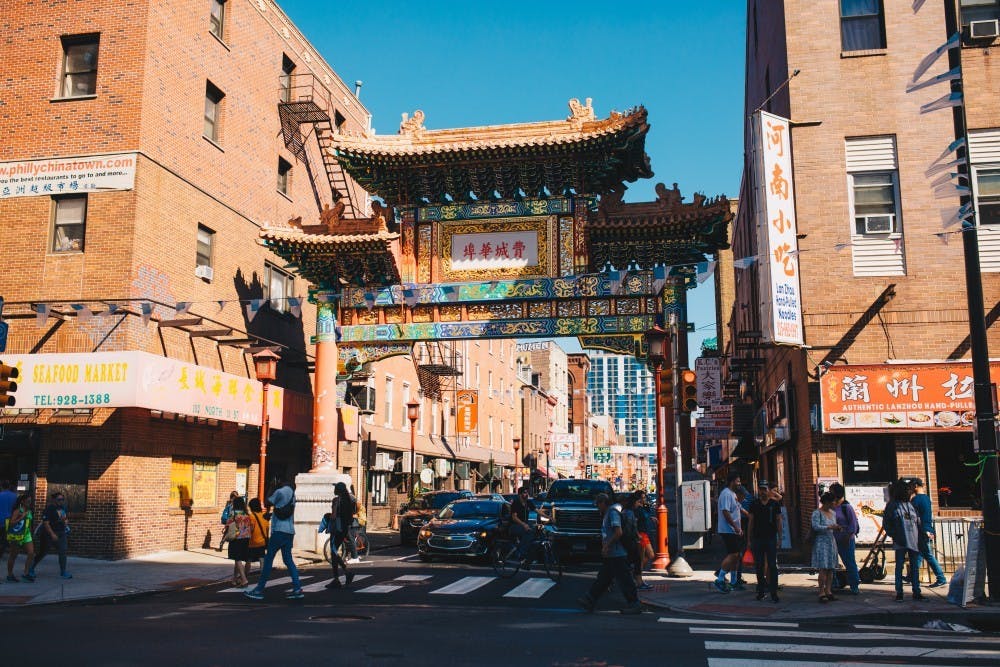I have a habit of untying my shoelaces as I ride the elevator to my dorm, a byproduct of growing up in an Asian household. Rule number one: Take off your shoes when you enter someone’s house. This is a nod to the sanctity of the home, and the physical act of removing one’s shoes represents a mental shift from presenting oneself to the outside world to stripping away those layers.
Although I don’t feel the same urge to untie my shoelaces every time I’m in Chinatown, something about it feels like the unfiltered experience of being at home. The longtime restaurants in Chinatown form the backbone of the neighborhood’s culture, with their remarkable flavors and reasonable prices, and I’ve always been amazed by the never–ending flurry of activity at places like E Mei Restaurant, Xi’an Sizzling Woks, Ocean City, and Spice C, despite their minimal use of digital marketing and even more minimal decorations. It made me wonder: What’s the secret ingredient that’s been driving the long–lasting success of these restaurants? I began my investigation at a foodie’s first stop in Philadelphia’s Chinatown: Nan Zhou Hand Drawn Noodle House.
Nan Zhou Hand Drawn Noodle House
Snuggled between Red Kings 2—a Penn favorite for late–night karaoke—and the Ten Ten Race Street apartment complex, Nan Zhou Hand Drawn Noodle House is a popular pit stop for both Penn students and Chinatown residents. Its storefront sign is a bold royal blue, a stark contrast to the predominantly warm color palette of Chinatown, but its reputation precedes this eye–catching display. Known for its fresh homemade noodles, this 19–year–old restaurant has earned its fair share of accolades over the years, all of which are proudly displayed on the first wall one sees upon entering.
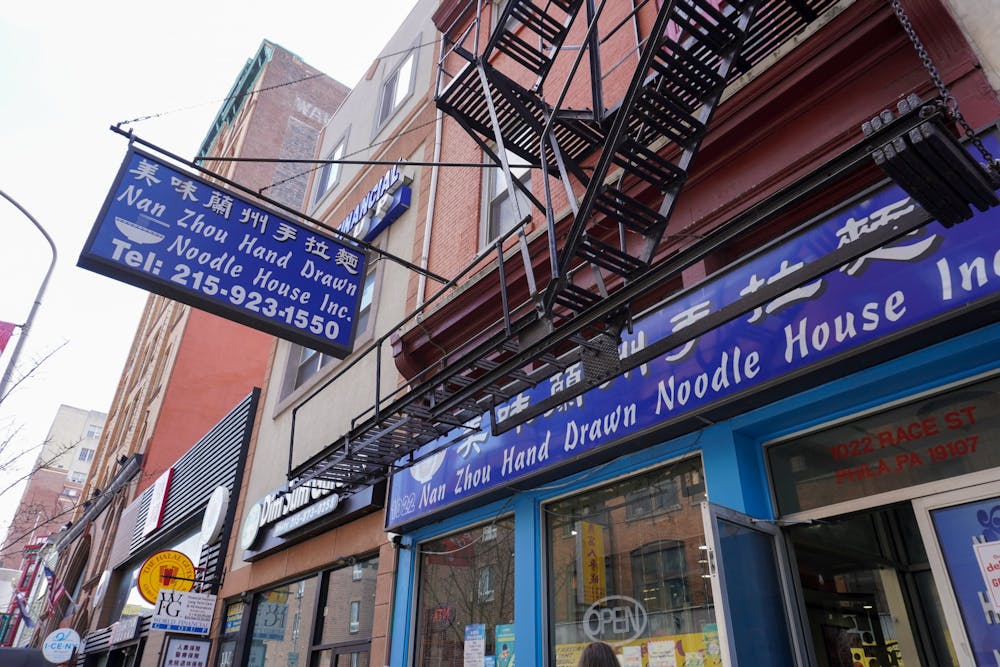
Photo courtesy of Andrew Yang
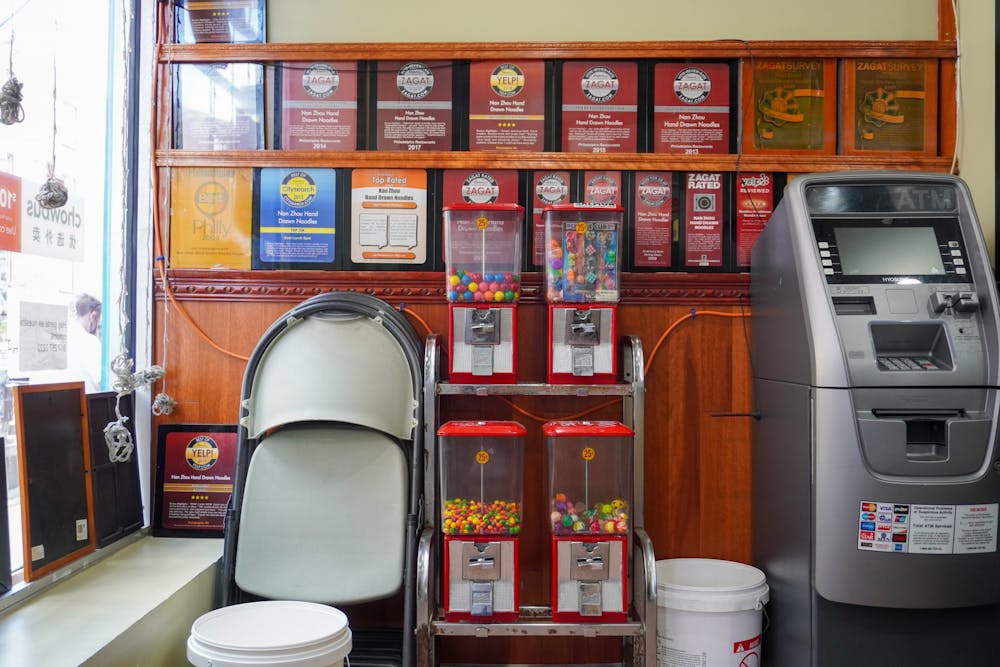
Photo courtesy of Andrew Yang
Food is often joked to be the love language in Asian households, but you can really taste the care put into its dishes, the most popular being the beef brisket hand drawn noodles. This dish is made with tender beef, chewy noodles, cilantro to refresh the palate, and white radish, which adds an unexpected crunchy texture; chili oil comprises the finishing touches to the noodle soup. It’s obvious why there isn’t an empty table in sight—the flavors are simply exquisite.
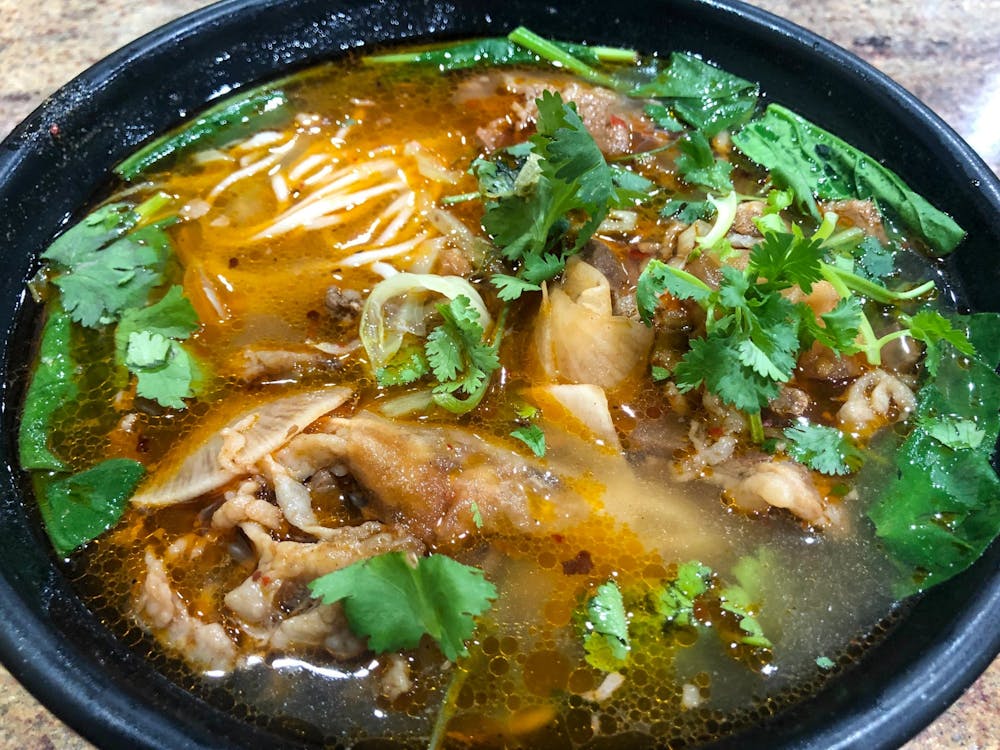
Photo courtesy of Cindy Zhang
Mrs. Chen Yan Yun, who co–owns Nan Zhou Hand Drawn Noodle House with her husband, tells me how she’s watched each generation of Penn students flock to their restaurant. She explains that their noodles and dumplings are all made from scratch, which has made them a standout in the restaurant scene. In fact, it’s not unlikely to spot a queue extending from Nan Zhou’s door, a feature that's persisted from its inception in 2003.
Customers, both old and new, fill every crevice of the restaurant. Chen’s face lights up in recognition of one of their longtime customers, an elderly couple who’s watched their restaurant expand to three times its original size and relocate from 927 Race Street to 1022 Race Street to accommodate the high demand. Their reasons for frequenting Nan Zhou Hand Drawn Noodle House are threefold: delicious flavors, familiar tastes, and a genuine fondness of the restaurant owners. Chen explains that the way people often hear about their restaurant is through word of mouth—customers will recommend the place to their friends and family—which makes the restaurant feel like a gathering place for one big family. Indeed, the atmosphere is lively this Saturday morning, and I revel in the patrons' animated chatter.
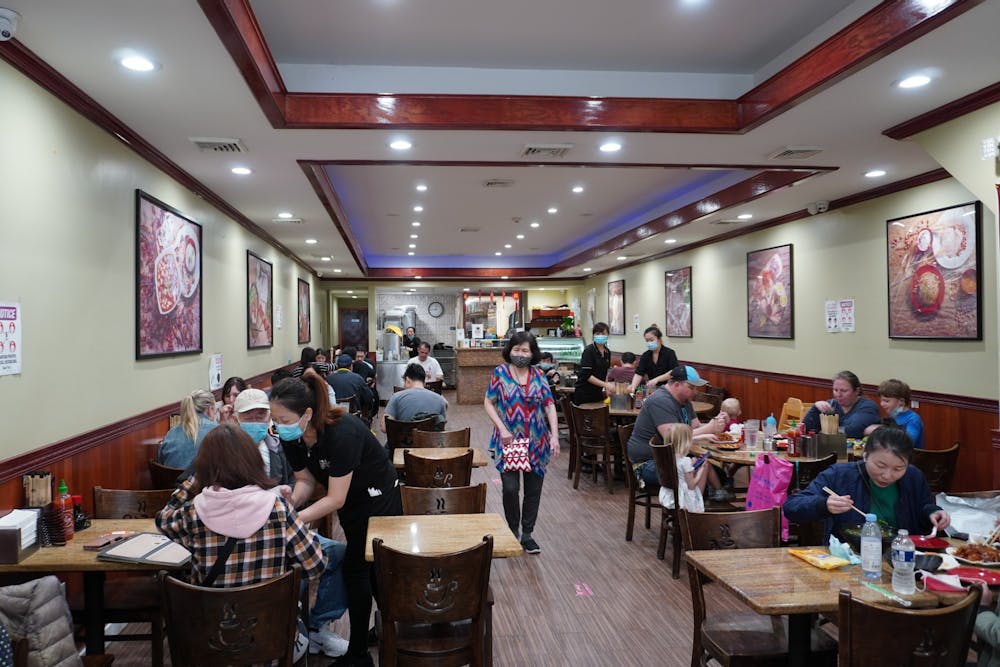
Photo courtesy of Andrew Yang
Although Nan Zhou Hand Drawn Noodle House excels in its various noodle soups, its pan–fried dumplings, scallion pancakes, and stir–fried noodles are notable must–try dishes, too. My appetite having been satiated by the beef brisket hand drawn noodles, I set out to find some classic Chinese desserts.
Heung Fa Chun Sweet House
Located in the heart of Chinatown, Heung Fa Chun Sweet House has occupied the exact same location for the past 33 years, and its bold mahogany storefront is hard to miss. Like Nan Zhou Hand Drawn Noodle House, its homemade goods are a huge selling point. Heung Fa Chun Sweet House offers an array of traditional Chinese breakfast foods—both savory and sweet—such as steamed buns, sticky rice dumplings, sesame balls, and tofu–based dishes. Mr. Ren, the dessert shop’s owner, tells me that tourists from all over the United States, especially Texas and Los Angeles, come to Philly’s Chinatown specifically for his desserts.
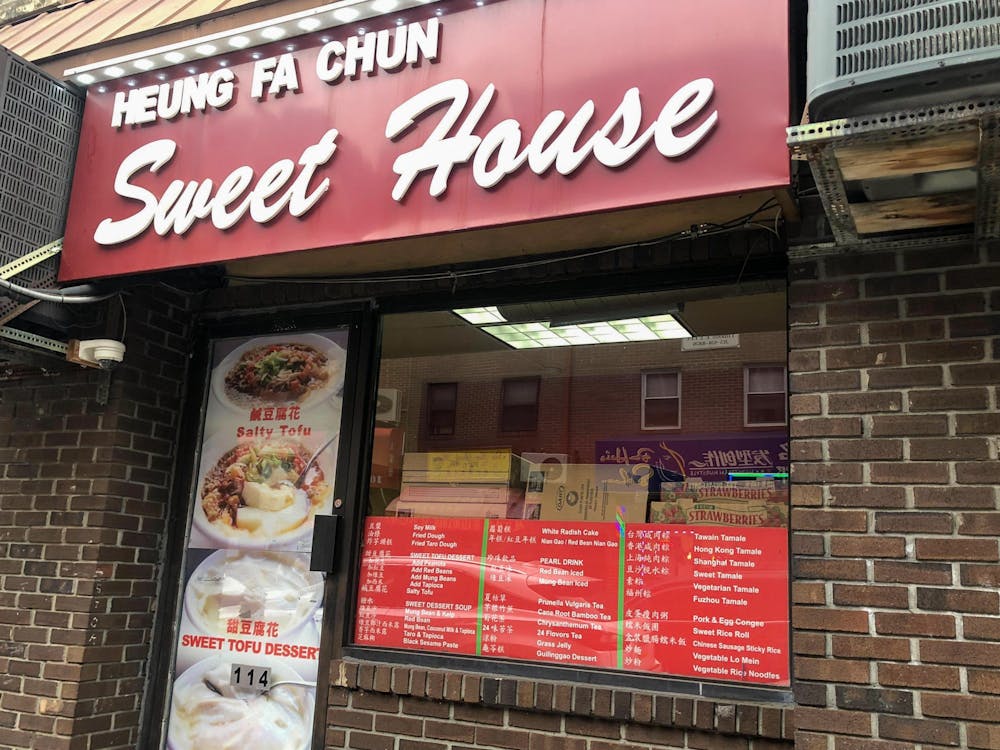
Photo courtesy of Cindy Zhang
Heung Fa Chun Sweet House preserves a small piece of Chinese history in its signature dish: bean curd jelly, or "douhua." Invented during the Han dynasty in an attempt to create food that would bestow immortality, its heavenly, albeit unconventional, taste has been affirmed on Yelp (where the dessert shop has earned a solid 4.5 stars). It can be savory or sweet—the sweet version is usually adorned with toppings such as red bean, peanuts, and sago pearls, and drizzled with syrup made from ginger, an essential ingredient in traditional Chinese medicine. Typically consumed warm, well–made bean curd jelly boasts a smooth texture—the one I had melted satisfyingly in my mouth.
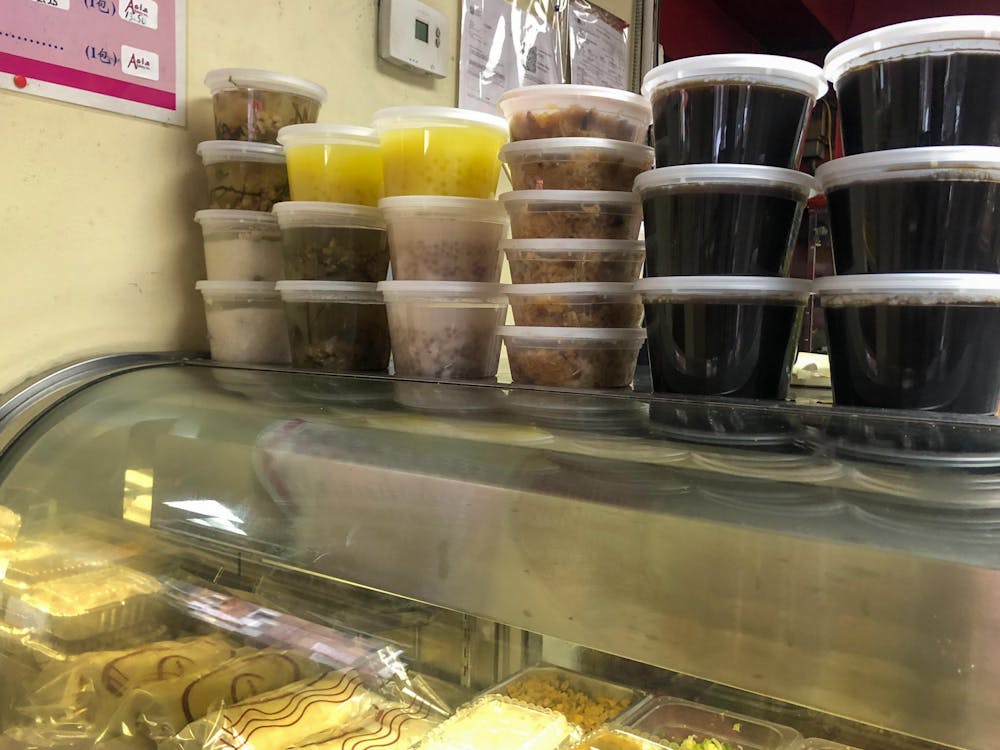
Photo courtesy of Cindy Zhang
There’s a small seating area near the window, but the majority of its customers order takeout (usually multiple servings to bring home to loved ones). Even so, Ren fondly recalls the longtime customers whom he’s watched progress through various stages of their lives, from elementary school students to now–married adults. He finds that customers who dislike his food will make no effort to hide it, but the same goes for those who love it. He rattles off a couple of his customers’ usual orders, and his attention to detail reflects the perception in Chinese culture of food as a means of bonding. Funnily enough, the Chinese equivalent of “How are you?” is “Have you eaten yet?”—a testament to the social significance of food.
Passersby form a large proportion of his customers now, as the combination of COVID–19 and rise in anti–Asian racism has taken a toll on the business in recent years. In fact, many of Chinatown’s distinctive restaurants—such as Rangoon, Imperial Inn, TT Skewer, and David’s Mai Lai Wah—have either permanently or temporarily shut down in recent years.
From the outside looking in, it’s easy to detect the quaint dessert shop’s charm. Its design is minimalistic, directing one’s attention to its elaborate menu and colorful desserts. Like Nan Zhou Hand Drawn Noodle House, Heung Fa Chun Sweet House shows a preference for substance over style and executes it flawlessly.
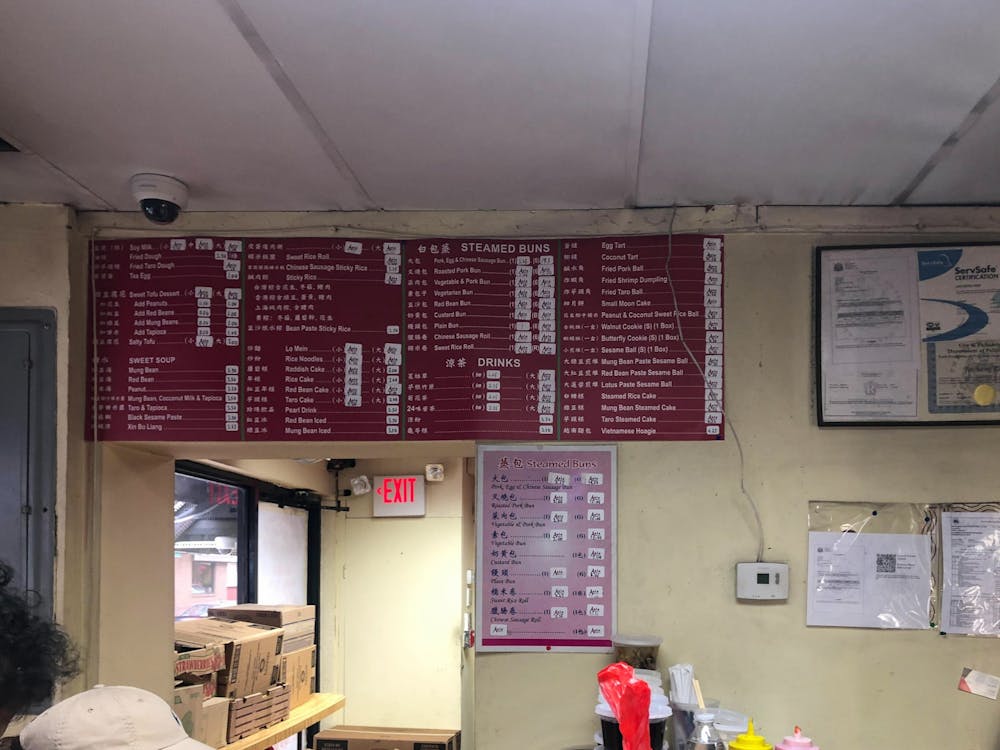
Photo courtesy of Cindy Zhang
The charm of Chinatown’s longtime restaurants lies in the care and love put into the dishes that their owners have perfected over the years. Their ability to bring authentic Chinese cuisine to Philly’s residents—and get them to keep coming back—while relying mostly on word of mouth and online reviews have made them anomalies in the restaurant scene. There’s nothing like a hearty meal to make a place feel like home, and these irreplaceable purveyors of Chinese food do just that. Walking into these restaurants is akin to entering a bustling household in the midst of Chinese New Year preparations—you don’t know what to expect, but you’re bound to leave with a full stomach. Except this time, you should probably keep your shoes on.
